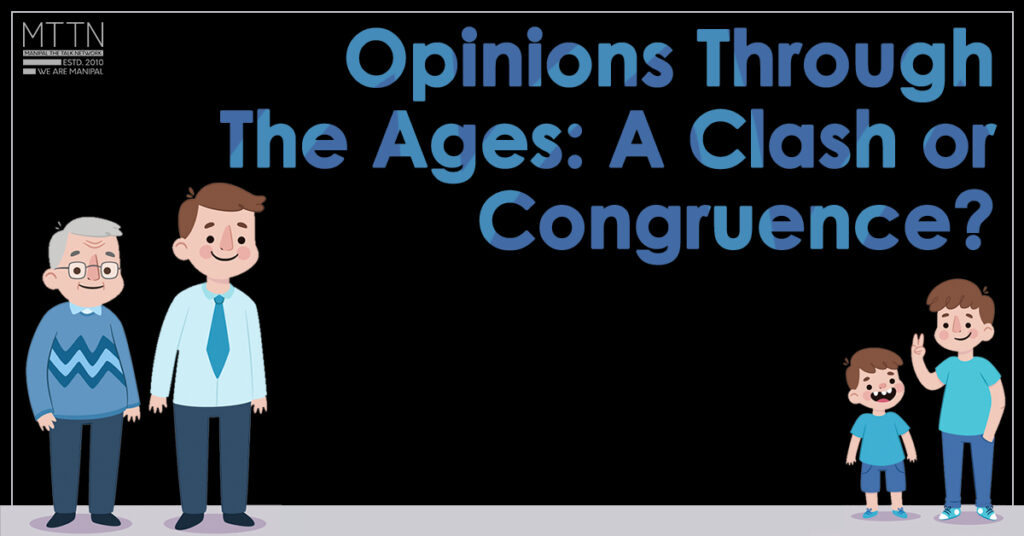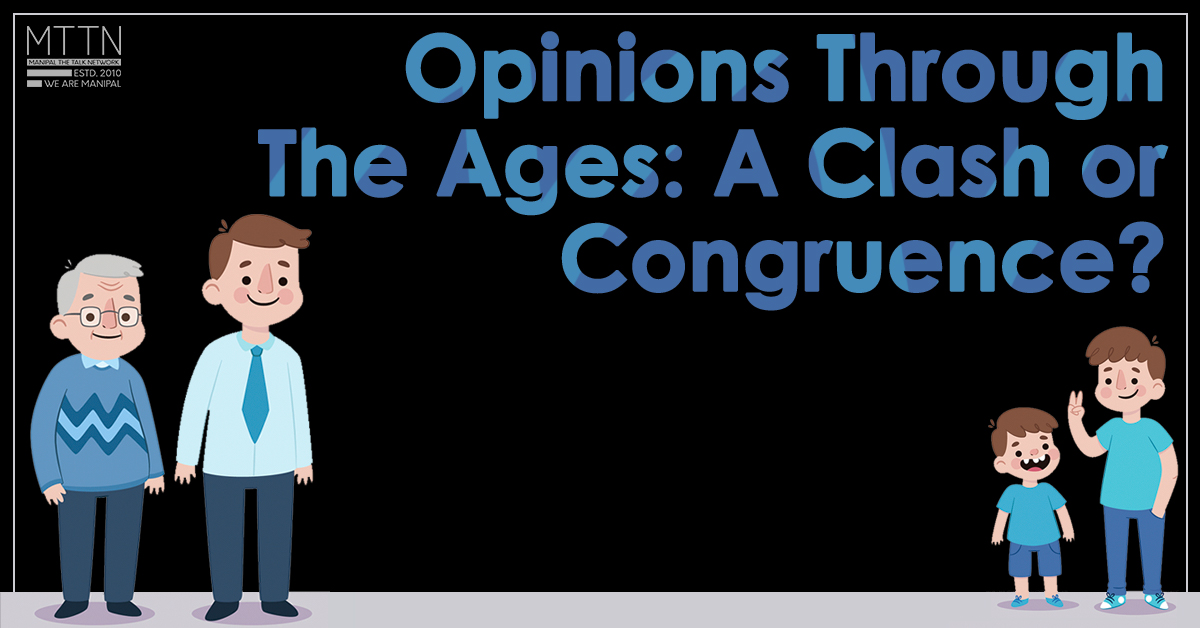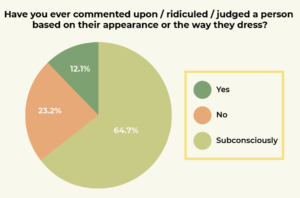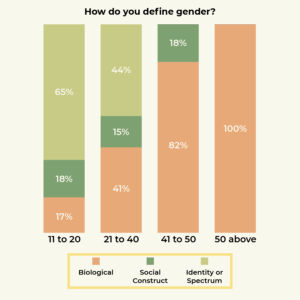
Technological advancements, industrial growth, political scenarios, global demographic—the last few decades have seen enormous changes and transformation. In such a dynamic world, it is natural that perceptions across different generations differ as well. We might have clashes of opinions about social, political, or religious issues, or we might even reach an agreement. It is common for each generation to embrace their lifestyles based on their circumstances and opinions. To gauge how many of such differences or similarities exist, we asked the public for their opinion on three issues—body image, marriage, and the LGBTQ+ community. Although we covered all generations, the responses we got were primarily from the urban sector—specifically college students and their parents. Based on that, the article might not cover people from all walks of life.
BODY IMAGE
Physical appearance is credited with creating the first impression. The way one feels about their body—size estimation and beauty assessment—is regarded as body image. Body image is associated with many psychological and emotional issues like low self-esteem, eating disorders, and depression. Despite changing times, the way we perceive physical appearance has not been altered. 189 of 222 responses from people across all age groups said body weight holds importance in their life. Unrealistic social expectations of how a man or woman should look like pressure people to look perfect. Whether it be skin tone, hair texture, or set beauty standards, we have all been on the receiving end of comparisons and judgements.
“Beauty standards, inferiority complex, constant comparison, experience, or individual instances have made me insecure over time. Other people’s opinions start to affect my insecurities after some time.” said a student.
We received a similar response by an older person who said, “My perception of myself (appearance) affects me. I also feel I am being judged when there is a younger crowd around me.”
With fair skin and skinniness regarded as more attractive features, social standards of beauty have been around for years. Statistics show that only 18% of the younger generation believe in ideal body types, and most are open to the evolving fashion. However, the older generations believe in dressing to a person’s body type and according to the occasion or place of visit.
The ingrained idea of ideal body type has subconsciously led about three-fourths of us to form prenotions on others based on their appearance. The glorification of size zero or the perfect body on social media has set unmatchable expectations. One of the responses we received said, “In social media, all girls look perfect and everything, and when I look at myself, I feel insecure about it.”
Despite body positivity and self-love awareness spreading in the present, more than half the responses we received said that they had been ridiculed for their physical appearance. Family and friends also contribute to creating insecurities by commenting on physical attributes and dressing style, regardless of its joviality.
Over many generations, society has created a positive platform to talk and share opinions on body image. It has made a safe place for most people to express their insecurities and accept and love themselves. However, even today, the need to have a perfect body is prevalent and does not escape anyone.
MARRIAGE
When it comes to marriage, there are some differences which emerge in its perception across different age groups. Marriage, by definition, is the union of two people that establishes obligations and rights between them. Most cultures perceive marriage to be sacred. A wedding reflects the customs, traditions, and beliefs of a specific community. Traditionally, it was viewed as a union for companionship; modern thoughts could not be more different.
The generational perceptions of marriage overlap; more than 75% believe that marriage is suitable for people, only if the two involved hold respect and love for each other.
Some young adults deem marriage good for legal security and tax exemptions as well, while some think of it as an unnecessary, socially constructed institution. The elderly regard it as a personal and social partnership—a beautiful sailing journey of life with their partners.
In some cases, marriage is also associated with the loss of individuality and space. Young adults, today, are more determined about setting boundaries with their partners beforehand. Some decades ago, societal obligations constituted a major part of the reasons for marrying. In contrast, people are now more conscious of their decisions. They realise the implications and are more careful in exercising their will in choosing their lifelong partners.
An interesting point to note is associated with gender roles in a marriage. People generally assume that typical Indian families require the women to handle the household work while the men are supposed to work and earn for their livelihood. However, the survey showed that only 1% of the respondents believed in this ideology. The belief which predominates across all age groups is that a husband and wife should equally divide and balance the familial and work responsibilities.
Marriage is a life-long commitment that requires an equal amount of work from both sides. Failure of understanding between the spouses could lead to separation. More than 90%, from all ages, agreed that separation is an option if both are unhappy in wedlock. Yet, conflict of opinions regarding the transparency of divorce and remarriage is present among different age groups. The younger generation thinks a split-up is common and must be normalised while the older ones view it as something that should be kept private and not talked of much.
LGBTQ+ COMMUNITY
These days, millennials and those belonging to Generation Z are increasingly being recognised as the ones launching social activism and being tolerant of diversity. The quality of being more open to individual identities and their uniqueness has manifested in their acceptance of the LGBTQ+ community as well. A few decades ago, the mere idea of identifying oneself as anything out of the ‘ordinary’ or the socially acceptable was unimaginable. From then to today’s age, wherein pride parades are conducted and inclusive safe spaces are created in the urban sectors, our society has advanced quite significantly.
For most of us, the newest generation, the thought of coming out as gay or lesbian to our parents or even approaching the subject while talking to them is daunting. While it is only the prospect of an awkward conversation for some, many fear the loss of emotional and financial stability in case of unacceptance by their families. Quite surprisingly, according to the survey, 85% of people aged above 40 believe that homosexuality is natural and normal, and 40% of them believe that same-sex marriage should be legalised. Most of them admit that although they would be shocked and it would be difficult to accept initially if someone close to them came out, they would eventually come to terms with it.
Most young adults realise the existence of heteronormative ideology in society and the problems associated with it. Considering that talking about sexuality is still shunned and regarded as taboo at large, it is natural that the members of the older generation weren’t as expressive in their responses or aren’t as enthusiastic about the idea of offering support. But their willingness to understand and accept is quite prominent, and a sign of optimism and hope.
However, the scenario seems to be more difficult for people identifying themselves as transgender, genderqueer, or gender fluid. There are some general inconsistencies and misinformed opinions about the definition of gender among people of all age groups. Many confuse gender identity with a person’s sexual orientation. The lack of knowledge might be a deep-rooted cause of the marginalisation this community faces.
Gender can have varied meanings—the most common being that of gender identity and that of a social construct. Gender is different from sex, which is determined solely by our genitalia or biological identity. We see how more young adults think of gender as a definition of the societal roles assigned to us or how a person identifies themselves as being part of the spectrum of gender identities. In sharp contrast, people aged above 40 think of gender as biological, which tends to create a binary interpretation of it. This may lead them to think of people who identify themselves as non-binary as someone who is not ‘normal’.
However, it would be ignorant to say that society at large has grown more accepting as the LGBTQ+ community still faces a lot of discrimination because of their identity alone. It is essential, therefore, to further educate oneself and disseminate accurate knowledge about it. Social media has positive impacts to a large extent, where support groups help an individual to meet others like them and create an environment of acceptance. In places where its reach is limited, the right representation in other forms of media such as television and movies can also be beneficial.
While some opinions across people of all age groups may coincide, differences also persist. Apart from perceptions of distinct social issues, there are also certain negative generalisations of groups by each other. This leads to a wider generational gap. Nonetheless, people always have something to learn from others around them, irrespective of their ages. What matters is how we try to bridge this gap, share the resources available to us, and create an inclusive and harmonious society.
Written by Archana S and Tulika Somani for MTTN
Featured Image by Arvin Das for MTTN
Image graphics by Akshay Dhansoia for MTTN
Stock Image sourced from Freepik



Leave a Reply
You must be logged in to post a comment.